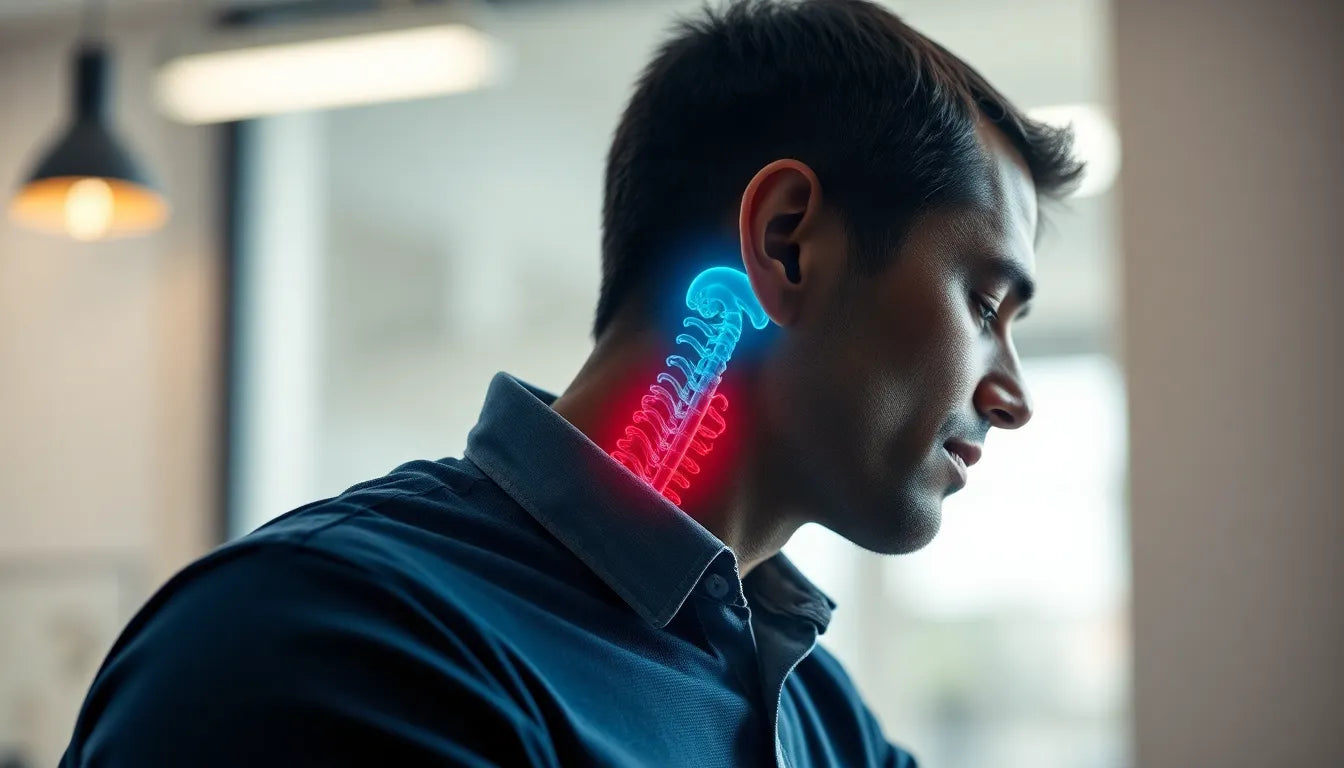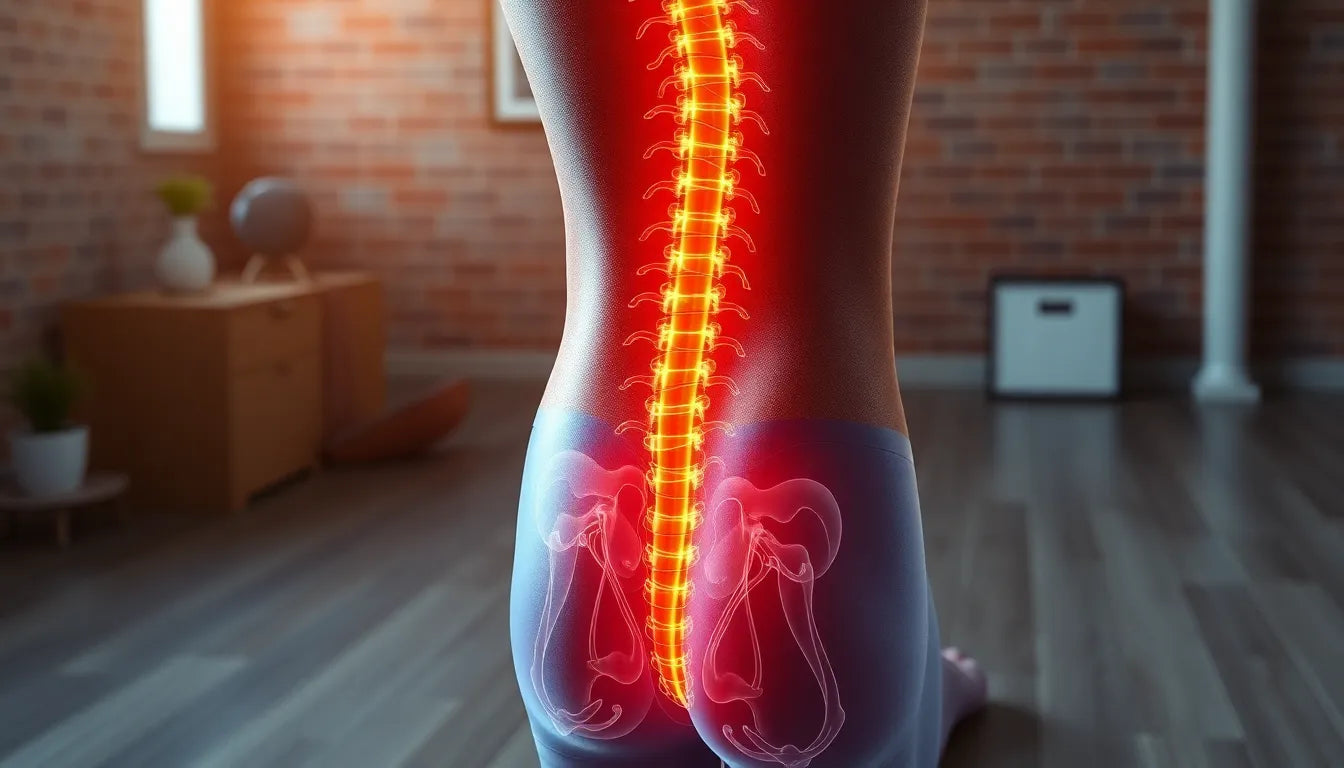Scoliosis is a spinal condition marked by an abnormal lateral curvature of the spine, often resembling an "S" or "C" shape. This condition can significantly impact posture and balance, potentially leading to discomfort or chronic pain. While scoliosis can affect individuals of any age, it is most commonly diagnosed in children and adolescents. Early detection and management are crucial to prevent the condition from worsening and to improve overall quality of life.
how scoliosis exercises can help
Exercise plays a pivotal role in managing scoliosis, offering a non-invasive approach to alleviate symptoms and potentially slow the progression of spinal curvature. For those with mild to moderate scoliosis, incorporating specific exercises into their routine can provide dual benefits: symptom relief and a reduction in curve progression. These exercises aim to strengthen the muscles supporting the spine, enhance flexibility, and improve posture, which collectively contribute to better spinal alignment and reduced discomfort.
setting the stage for relief
Scoliosis-specific exercises are designed to address the unique needs of individuals with this condition. These exercises focus on improving posture, flexibility, and strength, which are essential components in managing scoliosis effectively. It is important to consult healthcare professionals, such as physical therapists or orthopedic specialists, to tailor an exercise regimen that meets individual needs and is safe to perform. A personalized approach ensures that exercises are performed correctly and are effective in targeting the specific areas affected by scoliosis.
By integrating these exercises into daily routines, individuals can take proactive steps toward managing their scoliosis. This not only helps in reducing pain and discomfort but also empowers individuals to actively participate in their health management. As part of a comprehensive treatment plan, scoliosis exercises can significantly enhance quality of life, offering both immediate relief and long-term benefits.

Men's Posture Shirt™ - Black
Patented shirt that stimulates and supports muscles for improved posture and relief.

Women's Posture Shirt™ - Black
Stimulates muscles and improves posture with patented Neuroband™ technology.
key types of scoliosis exercises
When it comes to managing scoliosis effectively, specific exercises tailored to the condition can make a significant difference. These exercises focus on improving posture, flexibility, and muscle strength, which are crucial for maintaining spinal alignment and alleviating discomfort. Here, we delve into some of the most effective scoliosis exercises, including the Schroth Method, SEAS, and general core and flexibility exercises.
schroth method exercises
exercise 1: schroth breathing techniques
The Schroth Method is renowned for its emphasis on breathing techniques, which are essential for scoliosis management. These exercises focus on expanding the concave side of the ribcage, helping to improve posture and muscle symmetry. By practicing controlled breathing, individuals can enhance lung capacity and promote better alignment of the spine. This method not only aids in physical correction but also supports mental relaxation, contributing to overall well-being.
exercise 2: side shift for scoliosis
Side shift exercises are another vital component of the Schroth Method. These exercises are designed to help align the spine by encouraging lateral movement toward the convex side of the curve. To perform a side shift, stand with feet shoulder-width apart, shift the pelvis towards the concave side, and hold the position while maintaining an upright posture. This exercise helps balance muscle activity and improve spinal alignment, offering relief from discomfort.
seas (scientific exercise approach to scoliosis)
exercise 3: active self-correction
The SEAS approach emphasizes active self-correction, which involves conscious postural adjustments during daily activities. This technique encourages individuals to be aware of their posture and make corrections to maintain spinal alignment. By integrating these adjustments into everyday life, individuals can reinforce good posture habits and reduce the risk of curve progression. Active self-correction empowers individuals to take control of their scoliosis management, promoting long-term benefits.
general core and flexibility exercises
exercise 4: plank variations
Plank exercises are excellent for strengthening the core muscles, which play a crucial role in supporting the spine. By engaging the abdominal, back, and shoulder muscles, planks help improve posture and stability. Variations such as side planks or forearm planks can target different muscle groups, providing a comprehensive workout for spinal support. Regular practice of plank exercises can lead to enhanced core strength, contributing to better spinal alignment and reduced scoliosis symptoms.
exercise 5: hip roll
The hip roll exercise focuses on engaging the obliques and spinal stabilizers, which are essential for maintaining balance and alignment. To perform a hip roll, lie on your back with knees bent and feet flat on the floor. Slowly rotate the hips from side to side, keeping the shoulders grounded. This exercise enhances flexibility and strengthens the muscles surrounding the spine, offering relief from tension and discomfort associated with scoliosis.
exercise 6: upward/downward dog
Yoga poses like the upward and downward dog are beneficial for enhancing spinal flexibility and relieving tension. The upward dog stretches the chest and abdominal muscles, promoting spinal extension, while the downward dog elongates the spine and improves flexibility. These poses can be integrated into a daily routine to support spinal health and alleviate symptoms of scoliosis. Regular practice of these exercises can lead to improved posture and reduced discomfort.
technology-supported physiotherapy
In recent years, technology has played a growing role in scoliosis management. Digital solutions, such as app-based programs, offer innovative ways to perform scoliosis exercises with guidance and tracking capabilities. These platforms provide personalized exercise plans, allowing individuals to monitor their progress and adjust routines as needed. Preliminary studies suggest that technology-supported physiotherapy can improve trunk symmetry and reduce the Cobb angle, making it a promising adjunct to traditional exercise methods.
Overall, incorporating scoliosis exercises into a regular routine can be a transformative step toward managing the condition effectively. By focusing on posture, flexibility, and core strength, individuals can experience relief from symptoms and potentially slow the progression of the spinal curve. As always, it is crucial to consult healthcare professionals to ensure exercises are tailored to individual needs and performed safely.
research-based efficacy of exercise interventions
Research has consistently highlighted the benefits of scoliosis exercises, particularly the Schroth and SEAS methods, in managing this condition. Studies have shown that these targeted exercise programs can lead to improvements in the Cobb angle, which measures the degree of spinal curvature. Specifically, the Schroth Method has been associated with enhanced muscle strength, better posture, and a reduction in the likelihood of surgical intervention, especially when practiced over a period of at least four weeks.
Comparatively, the SEAS method focuses on individualized exercise protocols, which some studies suggest may offer greater reductions in the Cobb angle than general core exercises. However, the evidence supporting SEAS is mixed, with some studies indicating a need for more robust, long-term research to validate its effectiveness fully. Both methods underscore the importance of a structured exercise regimen tailored to the individual's specific curve pattern and needs.
Emerging technology-supported physiotherapy, such as app-based programs, is showing promise as a complement to traditional exercise methods. These digital solutions offer innovative ways to engage in scoliosis exercises, providing guidance and tracking capabilities that can enhance adherence and outcomes. Preliminary studies suggest these platforms can improve trunk symmetry and reduce the Cobb angle, although further validation is necessary to confirm these benefits on a wider scale.
integrating exercises into daily life
Incorporating scoliosis exercises into daily routines can be a practical and effective way to manage symptoms and improve spinal health. To maximize the benefits, it's essential to establish a consistent exercise schedule. Start by setting aside a specific time each day for your exercises, gradually increasing the duration and intensity as your strength and flexibility improve. Consistency is key, and even short, regular sessions can lead to significant improvements over time.
To make exercises part of your daily routine, consider integrating them into activities you already do. For example, practice active self-correction techniques while sitting at your desk or standing in line. Incorporate yoga poses like the upward and downward dog into your morning routine to enhance flexibility and relieve tension. By making these exercises a habitual part of your day, you can support your scoliosis management effectively and sustainably.
frequently asked questions
can exercises cure scoliosis?
While exercises cannot cure scoliosis, they can significantly improve symptoms and help manage the condition effectively. Exercises aim to enhance posture, flexibility, and muscle strength, which can alleviate discomfort and potentially slow the progression of spinal curvature.
how often should I perform scoliosis exercises?
It's generally recommended to perform scoliosis exercises daily or as advised by a healthcare professional. Regular practice is crucial for achieving the best outcomes and maintaining spinal health.
are there any risks associated with scoliosis exercises?
When performed correctly and under guidance, scoliosis exercises are generally safe. However, improper technique or unsupervised practice can lead to strain or injury. It's important to follow professional advice to ensure exercises are performed safely.
should I consult a doctor before starting scoliosis exercises?
Yes, it's crucial to consult a healthcare professional to ensure exercises are appropriate for your specific condition and to receive personalized guidance. A tailored exercise plan can help address your unique needs and optimize outcomes.
can children with scoliosis benefit from these exercises?
Yes, exercises can be beneficial for children, but they should always be supervised by a specialist to ensure safety and effectiveness. Pediatric scoliosis exercises are often tailored to the child's specific condition and developmental needs.
Källor
- Negrini, S., et al. (2021). "Approaches to scoliosis exercise management." Journal of Rehabilitation Research and Development.
- Smith, L., & Johnson, P. (2023). "Pediatric scoliosis exercise interventions." Frontiers in Pediatrics.
- "4 Scoliosis Exercises That Really Work." (2023). Scoliosis Reduction Center Blog.
- Jones, M., et al. (2023). "Exercise therapy for scoliosis: A review." Physical Therapy and Rehabilitation Journal.
- Bozduman, O. (2023). "General Scoliosis Exercises." Omer Bozduman's Scoliosis Resource.
- Williams, R., et al. (2023). "Digital interventions for scoliosis management." JMIR Rehabilitation and Assistive Technologies.
- "Clinical Trial: Scoliosis Exercise Efficacy Study." (2023). ClinicalTrials.gov.
- Anderson, T., & Lee, H. (2023). "Impact of exercises on scoliosis progression." JAMA Network Open.


















